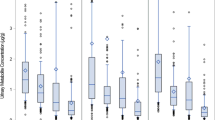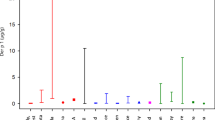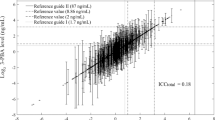Abstract
Although children are exposed to a variety of environmental hazards, including pesticides, there is a scarcity of information available to estimate exposures realistically. This article reports on one of the first attempts to measure multi-pathway pesticide exposures in a population-based sample of urban and non-urban children. A design strategy was developed to assess multi-pathway pesticide exposures in children using personal exposure measurements in combination with complimentary measurements of biological markers of exposure, concentrations in relevant environmental media, and time spent in important microenvironments and participating in exposure-related activities. Sample collection and analysis emphasized measurement of three insecticides (i.e., chlorpyrifos, diazinon, and malathion) and one herbicide (i.e., atrazine). These compounds were selected because of their frequent use, presence in multiple environmental media, expected population exposures, and related hazard/toxicity. The study was conducted during the summer of 1997 in Minnesota and involved a stratified sample of households with children ages 3–12 years. Participants resided in either (a) the cities of Minneapolis and St. Paul (urban households), or (b) Rice and Goodhue Counties just south of the metropolitan area (non-urban households). Results from a residential inventory documenting storage and use of products containing the target pesticides were used to preferentially select households where children were likely to have higher exposures. The study successfully obtained pesticide exposure data for 102 children, including measurements of personal exposures (air, hand rinse, duplicate diet), environmental concentrations (residential indoor/outdoor air, drinking water, residential surfaces, soil), activity patterns (obtained by questionnaire, diary, videotaping), and internal dose (metabolites in urine).
This is a preview of subscription content, access via your institution
Access options
Subscribe to this journal
Receive 6 print issues and online access
$259.00 per year
only $43.17 per issue
Buy this article
- Purchase on Springer Link
- Instant access to full article PDF
Prices may be subject to local taxes which are calculated during checkout
Similar content being viewed by others
Author information
Authors and Affiliations
Corresponding author
Rights and permissions
About this article
Cite this article
QUACKENBOSS, J., PELLIZZARI, E., SHUBAT, P. et al. Design strategy for assessing multi-pathway exposure for children: the Minnesota Children's Pesticide Exposure Study (MNCPES). J Expo Sci Environ Epidemiol 10, 145–158 (2000). https://doi.org/10.1038/sj.jea.7500080
Received:
Accepted:
Published:
Issue Date:
DOI: https://doi.org/10.1038/sj.jea.7500080
Keywords
This article is cited by
-
Extermination strategies reported in the NYC Health and Nutrition Examination Survey, 2004: Prevalence and predictors
Journal of Exposure Science & Environmental Epidemiology (2013)
-
Reconstructing population exposures to environmental chemicals from biomarkers: Challenges and opportunities
Journal of Exposure Science & Environmental Epidemiology (2009)
-
Pesticide loadings of select organophosphate and pyrethroid pesticides in urban public housing
Journal of Exposure Science & Environmental Epidemiology (2008)
-
Comparison of global positioning system (GPS) tracking and parent-report diaries to characterize children's time–location patterns
Journal of Exposure Science & Environmental Epidemiology (2007)
-
Video methods in the quantification of children's exposures
Journal of Exposure Science & Environmental Epidemiology (2006)



